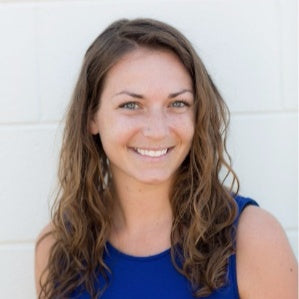It all started as Melissa Stern and Adam Fitting's idea to change the stigma around baldness. Since then, Comprehensive Cranium Care has been featured in Men’s Health and SELF. The #OwnYourDome movement can be seen all over social media. And they’re still early in their trajectory — add this to your list of ecommerce brands to watch.
So how did the bald “hair” care brand launch, and where do they get such great product photos? We asked, and this is what they shared with us:
Launching with a remote team
Like many ecommerce businesses, the Cranium Care crew launch crew was lean but mighty, comprised of a group of remote contractors (plus Melissa and Adam) located all over the world. “We were living in Shanghai at the time,” says Melissa. “It was a lot of late-night phone calls and trying to figure out times where we could get everybody on the phone together in different time zones. That was a little bit crazy.”
To put the team together, Melissa and Adam turned to their existing networks and connections. “Everyone on that team is someone we kind of have a personal relationship with,” Melissa says.
She went to college with their copywriter, their art director is a close friend of the couple, and they pulled in a product photographer also located in Shanghai at the time. “They're all people that we know personally and pulled together,” she says. “That helped a lot in terms of bringing everyone together and creating a sense of community and ownership over the projects.”

To keep the team on track, regular communication was key. “We had weekly calls with everybody on the team as much as possible, so everybody stayed on the same page and up-to-date, and we could share ideas and all of that,” says Melissa. “Then I would get on calls individually with people as needed in between.”
Each person had a clearly defined role, too. “None of them are full-time employees, but we’ve worked very closely together — especially at the start to get everything in place,” she says.
Getting product photos on a budget
With a lean team and budget, Melissa, Adam and co. have to get creative but intentional in developing product photography. “A lot of our money is going towards product development and launching a couple of new products that we have in the works,” says Melissa. Because of that, they need to be budget-conscious while also getting images that will contribute to their bottom line.

“We have to balance [business development] with the fact that it’s really important to us that we keep our branding really solid, and so we will find the money if we have to in order to use somebody who we are confident gets what we're going for,” she says.
To find that balance, Cranium Care uses a mix of 3D renders and lifestyle product photography. “We outsource the renders,” says Melissa. “For lifestyle photos, we’ve worked with a professional photographer and also use in-house photos.”
“It’s mostly renders on our website,” says Melissa. A 3D render is a digital graphic made on a computer that is made to look lifelike and replicate a product photography. They’re cost-effective because you can easily outsource it and you don’t need to find budget to coordinate an entire photoshoot — two main reasons Cranium Care uses them on their site and social media. “Having the renders done is probably less expensive than doing a custom photo shoot, and then all the work that needs to be done to touch them up after,” she says.
“I was intent on getting renders done,” Adam says. “I knew we would do product photography, but I wanted that to be situational. I thought renders would be a lot more versatile.”

“It’s hard to get a really nice photograph without a professional setup,” says Melissa. “The renders are just flawless. They’re so easy to work with for other things, so they’re super multi-purpose.”
Melissa says renders have been invaluable for repurposing for various uses. It’s easy to swap out backgrounds and give the shot an entirely new aesthetic. “Someone who’s good with Photoshop can take those and put them in any context, so they’ve been a really great resource,” she says. “They have paid for themselves easily.”
Repurposing images to maximize investment
Cranium Care outsources their photo editing. They need images for more than just their website — print and online marketing materials also require high-quality imagery. “We’ve used them in all of our printed assets,” says Melissa. “We just went to a trade show recently, and we had a printed brochure, so of course they were really useful for that.”

“[Our photographer] would take the [lifestyle] photos and then add the render and bottles into it to make a lifestyle-type photo,” says Melissa.
On Instagram, they change up the imagery to keep from a monotonous feed. “We have a mix of product photos that are the actual bottles in context,” says Melissa.
Moving forward with outsourcing your product photos

While overall, outsourcing to a dispersed team has worked well for Cranium Care — much of their success hinges on this collaboration. “We're learning more about what to look for, what to ask for, and how to be a little bit tougher in vetting people,” says Melissa.


